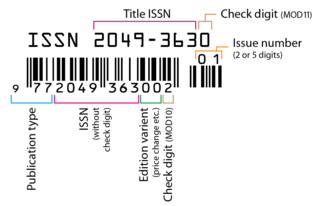
Blood glucose monitoring is a way of testing the concentration of glucose in the blood (glycemia). Particularly important in diabetes management, a blood glucose test is typically performed by piercing the skin to draw blood, then applying the blood to a chemically active disposable 'test-strip'. Different manufacturers use different technology, but most systems measure an electrical characteristic, and use this to determine the glucose level in the blood. The test is usually referred to as capillary blood glucose.

Type 2 diabetes (T2D), formerly known as adult-onset diabetes, is a form of diabetes that is characterized by high blood sugar, insulin resistance, and relative lack of insulin. Common symptoms include increased thirst, frequent urination, and unexplained weight loss. Symptoms may also include increased hunger, feeling tired, and sores that do not heal. Often symptoms come on slowly. Long-term complications from high blood sugar include heart disease, strokes, diabetic retinopathy which can result in blindness, kidney failure, and poor blood flow in the limbs which may lead to amputations. The sudden onset of hyperosmolar hyperglycemic state may occur; however, ketoacidosis is uncommon.

The glycemic index (GI) (;) is a number from 0 to 100 assigned to a food, with pure glucose arbitrarily given the value of 100, which represents the relative rise in the blood glucose level two hours after consuming that food. The GI of a specific food depends primarily on the quantity and type of carbohydrate it contains; but also is affected by the amount of entrapment of the carbohydrate molecules within the food, the fat and protein content of the food, the amount of organic acids in the food, and whether it is cooked and if so how it is cooked. GI tables are available that list many types of foods with their GIs. A food is considered to have a low GI if it is 55 or less; high GI if 70 or more; and mid-range GI if 56 to 69.
Glycated hemoglobin is a form of hemoglobin that is chemically linked to a sugar. The usual sugar is glucose. The formation of the sugar-Hb linkage indicates the presence of excessive sugar in the bloodstream, often indicative of diabetes. A1C is of particular interest because it is easy to detect.

Tagatose is a sweetener based on its properties as a monosaccharide, specifically a hexose. It is often found in dairy products, and is very similar in texture to sucrose and is 92% as sweet, but with only 38% of the calories. Tagatose is generally recognized as safe (GRAS) by the FAO/WHO and has been since 2001. Since it is metabolized differently from sucrose, tagatose has a minimal effect on blood glucose and insulin levels. Tagatose is also approved as a tooth-friendly ingredient for dental products.
Stress hyperglycemia is a medical term referring to transient elevation of the blood glucose due to the stress of illness. It usually resolves spontaneously, but must be distinguished from various forms of diabetes mellitus.
The term diabetes includes several different metabolic disorders that all, if left untreated, result in abnormally high concentration of a sugar called glucose in the blood. Diabetes mellitus type 1 results when the pancreas no longer produces significant amounts of the hormone insulin, usually owing to the autoimmune destruction of the insulin-producing beta cells of the pancreas. Diabetes mellitus type 2, in contrast, is now thought to result from autoimmune attacks on the pancreas and/or insulin resistance. The pancreas of a person with type 2 diabetes may be producing normal or even abnormally large amounts of insulin. Other forms of diabetes mellitus, such as the various forms of maturity onset diabetes of the young, may represent some combination of insufficient insulin production and insulin resistance. Some degree of insulin resistance may also be present in a person with type 1 diabetes.
Fructosamines are compounds that result from glycation reactions between a sugar and a primary amine, followed by isomerization via the Amadori rearrangement. Biologically, fructosamines are recognized by fructosamine-3-kinase, which may trigger the degradation of advanced glycation end-products. Fructosamine can also refer to the specific compound 1-amino-1-deoxy-D-fructose (isoglucosamine), first synthesized by Nobel laureate Hermann Emil Fischer in 1886.
A diabetic diet is a diet that is used by people with diabetes mellitus or high blood glucose to minimize symptoms and dangerous consequences of the disease.

MiniMed Paradigm is a series of insulin pumps manufactured by Medtronic for patients with diabetes mellitus. The pump operates with a single AAA battery and uses a piston-plunger pump to infuse a programmed amount of insulin into the patient through a length of tubing. The Paradigm uses a one-way wireless radio frequency link to receive blood sugar measurements from select glucose meters. The Paradigm RT series adds the ability to receive data from a mated continuous blood-glucose monitor. Although the pump can use these measurements to assist in calculating a dose of insulin, no actual change in insulin delivery occurs without manual user-intervention.

1,5-Anhydroglucitol, also known as 1,5-AG, is a naturally occurring monosaccharide found in nearly all foods. Blood concentrations of 1,5-anhydroglucitol decrease during times of hyperglycemia above 180 mg/dL, and return to normal levels after approximately 2 weeks in the absence of hyperglycemia. As a result, it can be used for people with either type-1 or type-2 diabetes mellitus to identify glycemic variability or a history of high blood glucose even if current glycemic measurements such as hemoglobin A1c (HbA1c) and blood glucose monitoring have near normal values. Despite this possible use and its approval by the FDA, 1,5-AG tests are rarely ordered. There is some data suggesting that 1,5-AG values are useful to fill the gap and offer complementary information to HbA1c and fructosamine tests.
Mauriac syndrome is a rare complication of type 1 diabetes characterized by extreme liver enlargement due to glycogen deposition, along with growth failure and delayed puberty. It occurs in some children and adolescents with type 1 diabetes irrespective of their glycemic control.
Prevention of type 2 diabetes can be achieved with both lifestyle changes and use of medication. The American Diabetes Association categorizes prediabetes as a high-risk group that has glycemic levels higher than normal but does not meet criteria for diabetes. Without intervention people with prediabetes progress to type 2 diabetes with a 5% to 10% rate. Diabetes prevention is achieved through weight loss and increased physical activity, which can reduce the risk of diabetes by 50% to 60%.
Glucommander is a computer-directed method of inpatient glucose management.
The FOUR Score is a clinical grading scale designed for use by medical professionals in the assessment of patients with impaired level of consciousness. It was developed by Dr. Eelco F.M. Wijdicks and colleagues in Neurocritical care at the Mayo Clinic in Rochester, Minnesota.

Acute aluminium phosphide poisoning (AAlPP) is a large, though under-reported, problem throughout the world, particularly in the Indian subcontinent. Aluminium phosphide (AlP), which is readily available as a fumigant for stored cereal grains, sold under various brand names such as QuickPhos and Celphos, is highly toxic, especially when consumed from a freshly opened container. Death results from profound shock, myocarditis and multi-organ failure. Aluminium phosphide has a fatal dose of between 0.15 and 0.5 grams. It has been reported to be the most common cause of suicidal death in North India. Deaths have also been reported in Iran. In January 2017, four children died at a trailer park in Amarillo, Texas, after the pesticide was used under the home to kill rats. Several incidents of death in travelers in Thailand and other parts of Southeast Asia may have been caused by aluminum phosphide or chlorpyrifos, an organophosphate insecticide, used in an attempt to kill bedbugs in hotels. Wired magazine reported on the problem in March 2014. A short film in Arabic on Youtube that focused on the problem in Saudi Arabia had over 5 million hits as of early 2018. The CDC has classified phosphine as immediately dangerous to life at 50 parts per million. In a study from Saudi Arabia, poisoning was most common during fumigation of households.

Diabetes mellitus (DM), commonly known as diabetes, is a group of metabolic disorders characterized by high blood sugar levels over a prolonged period. Symptoms of high blood sugar include frequent urination, increased thirst, and increased hunger. If left untreated, diabetes can cause many complications. Acute complications can include diabetic ketoacidosis, hyperosmolar hyperglycemic state, or death. Serious long-term complications include cardiovascular disease, stroke, chronic kidney disease, foot ulcers, and damage to the eyes.

Urinothorax means urine in the fluid-filled cavity that surrounds the lungs. It is a rare cause of pleural effusion secondary to obstructive uropathy whereby urine forms a collection in the pleural cavity. The urine arrives in the pleural space either retroperitoneally under the posterior diaphragm, or via the retroperitoneal lymphatics. It remains a rare, possibly under-diagnosed, differential in the case of transudative pleural effusion. Respiratory symptoms are usually mild. described 47 cases between 1967 and 2007, noting that it was more prevalent in males, generally ipsilateral to the obstruction, and in most of the cases it is relieved by clearance of the obstruction.












